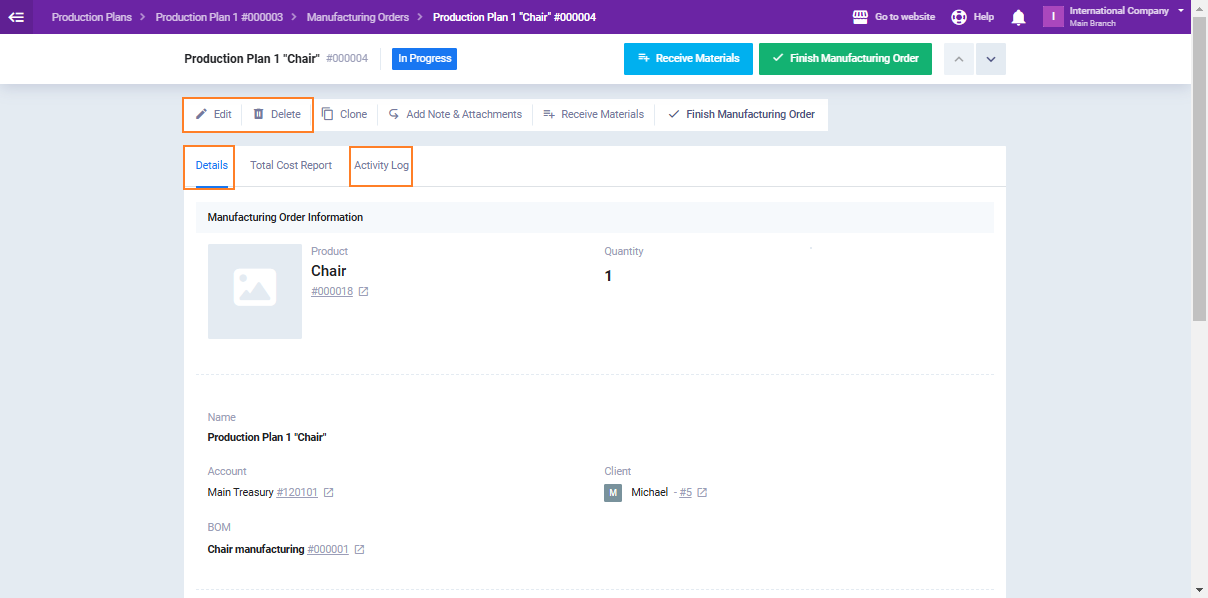Manufacturing Orders Guide
A manufacturing order, which is usually made from a bill of materials, is a document that gives you the actual steps for the manufacturing phase.
The manufacturing order contains all the financial and operational data related to the product. Based on this information, you can create a stock request for the raw materials needed for the manufacturing process, as well as a requisition to release these raw materials from your inventory. Additionally, a detailed and summarized cost report is generated.
Once the manufacturing order is finished, the specified quantity of the manufactured product will be added to the warehouse you have designated.
Adding Manufacturing Orders
Click on “Manufacturing” then click on “Manufacturing Orders” then Click on “Add Manufacturing Order“ button.
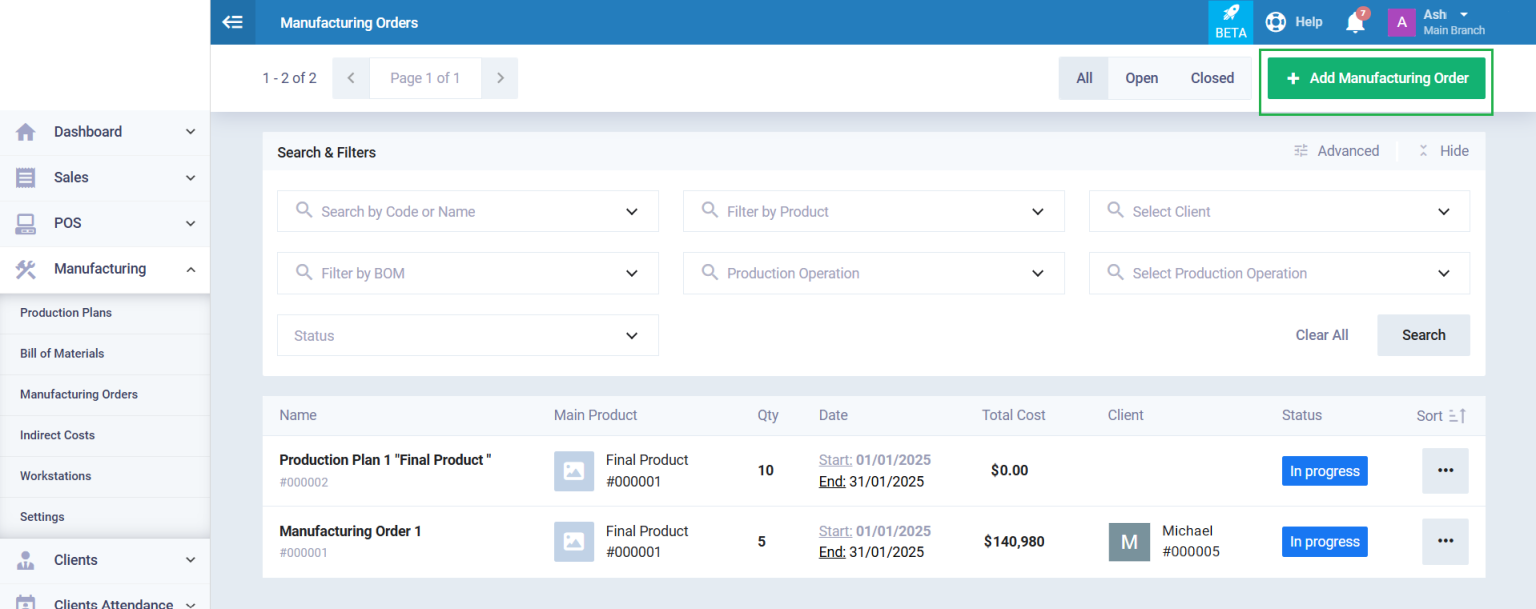
Enter the Manufacturing Order information according to the following classification:
Manufacturing Order Information
- Name: Enter a name for the manufacturing order.
- Code: A unique automatic code for each manufacturing order, generated by the system.
- Start Date: Enter the start date for the manufacturing order.
- End Date: Enter the end date for the manufacturing order.
- Account: Choose an account from the chart of accounts to assign to the manufacturing order.
- You can modify the chart of accounts and add a new account for the manufacturing order. For more details on how to add a new account, refer to this guide.
- Employees: Select the employee to assign the manufacturing order to from the dropdown list.
- Customer: Select the customer to assign the manufacturing order to from the dropdown list.
- Products: Select the final product to be manufactured from the dropdown list.
- The product must already be added in your system in order to appear here. For more information on how to add a new product, refer to this guide.
- Req. Quantity: Enter the required quantity of the product.
- BOM: Choose the Bill of Materials for which the manufacturing order is to be created.
-
- If you have already added a BOM that contains this product and it is set as the “Default” BOM, it will automatically be selected once you choose the product.
-
- Production Routing: Select the production routing to be assigned to the manufacturing order.
- For more details on how to add a production routing, refer to this .
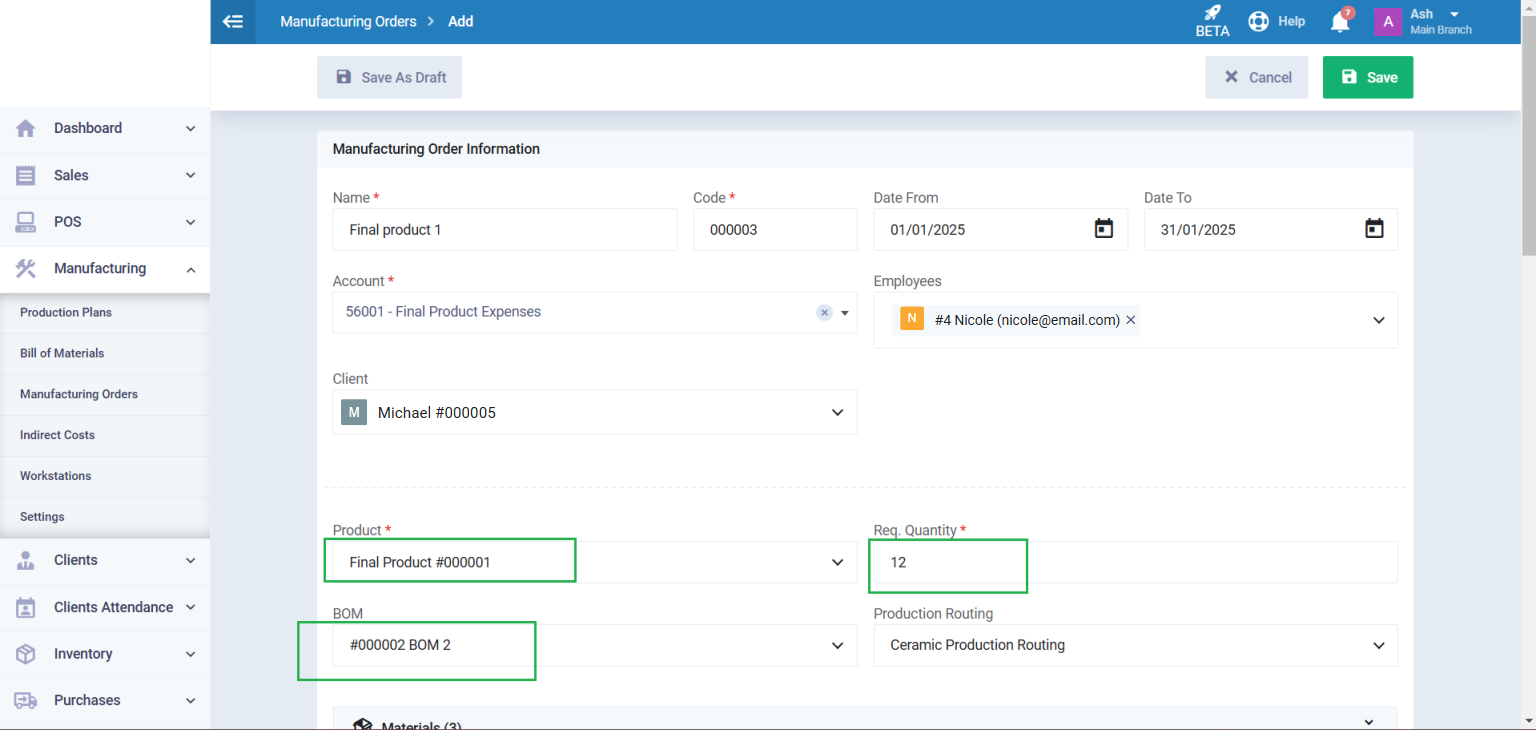
Materials
-
- Products: Choose the raw materials used in manufacturing the product.
- The raw material must be added as a product in your system. For more information on how to add a new product, refer to this guide.
- Click the “+Add” button if you need to add more raw materials.
- Planned QTY: Enter the quantity of each raw material needed to manufacture the required quantity of the final product.
- The unit of measurement for quantity is based on the unit defined when adding the raw material to the products in the system.
- Price: This is automatically determined based on the price entered when adding the raw material to inventory. It will either match the average cost price or the purchase price if there is no average cost available due to different purchase prices.
- Production Operation: Specify the stage in the production process where this raw material is needed.
- Note: The material fields will automatically appear if you select a BOM that includes the raw materials and their details.
- Products: Choose the raw materials used in manufacturing the product.

Expenses
-
- Account: Enter the account to link this expense to from the chart of accounts.
- You can modify the chart of accounts and add a new account for this expense. For more details on how to add a new account, refer to this guide.
- Estimated Amount: Enter the expense amount if the manufacturing order is not linked to a Bill of Materials (BOM). If the manufacturing order is linked to a BOM, the value will be automatically displayed based on the cost type and the quantity of the final product in the manufacturing order.
- Description: Add a description related to the expense.
- Production Operation: Select the production stage where this expense occurs.
- Note: The expense fields will automatically appear if you select a BOM that includes the expenses and their details.
- Account: Enter the account to link this expense to from the chart of accounts.

Manufacturing Operations
-
- Workstation: Choose the workstation from the list of workstations that you have previously added in the system.
- Operating Time: Enter the operating time based on the unit set for the workstation.
- Example: If the unit for the workstation is “minutes” and you want the operating time to be one hour, enter 60. If the unit is “hours” and you want the operating time to be one hour, enter 1.
-
- Description: Add any description related to the workstation.
- Production Operation: Select the production stage for this workstation.
- Note: The manufacturing operations fields will automatically appear if you select a BOM that includes manufacturing operations and their details.
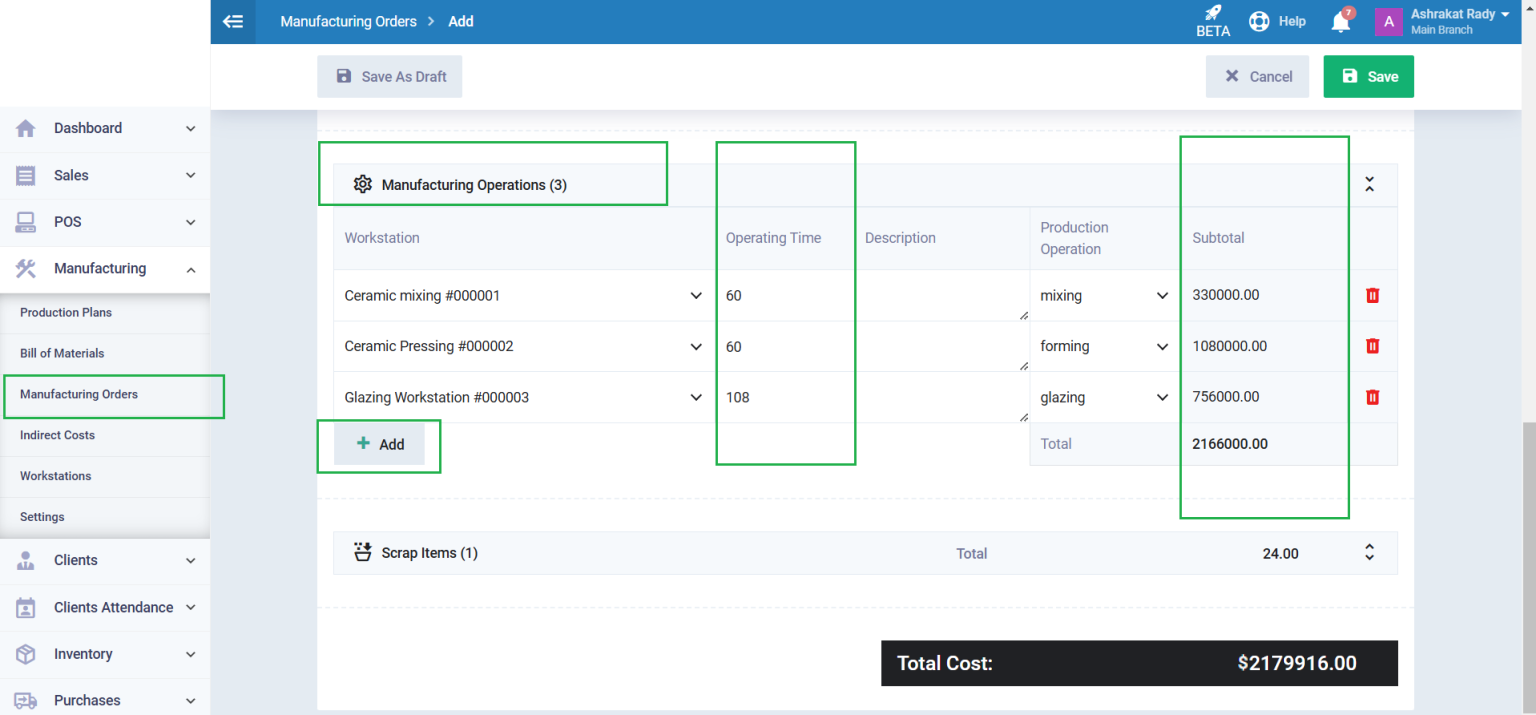
Scrap Items
- Products: Enter the product to be considered waste.
- Quantity: Enter the quantity of the scrap item.
-
- Price: Enter the price of the scrap item.
- Production Operation: Select the production stage where the scrap item is generated.
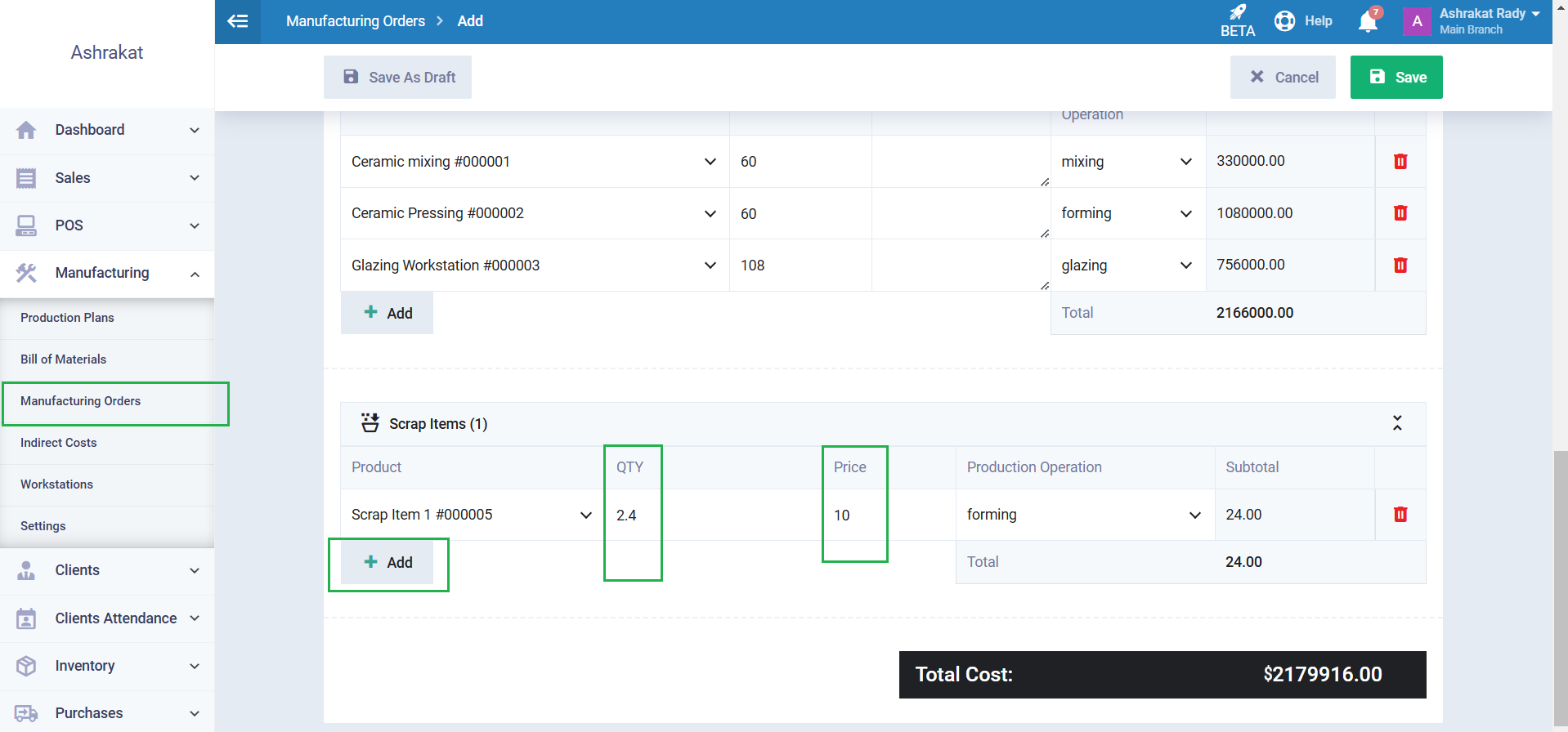
Actions on the manufacturing orders
After saving the manufacturing order, you can perform several actions, such as “Edit,” “Duplicate,” and “Delete.”
